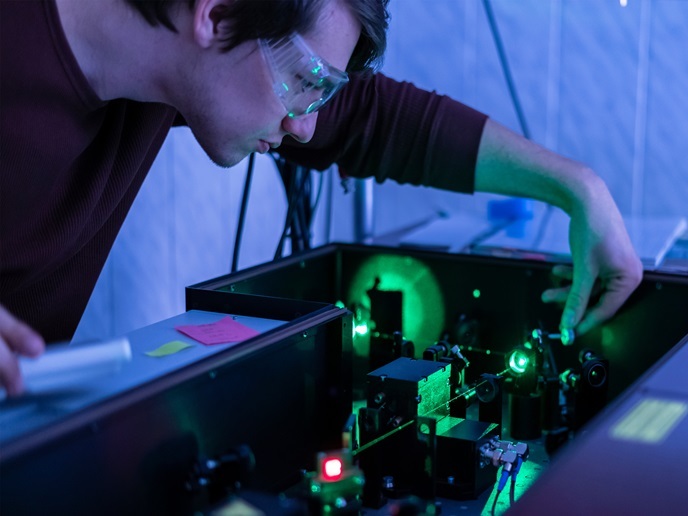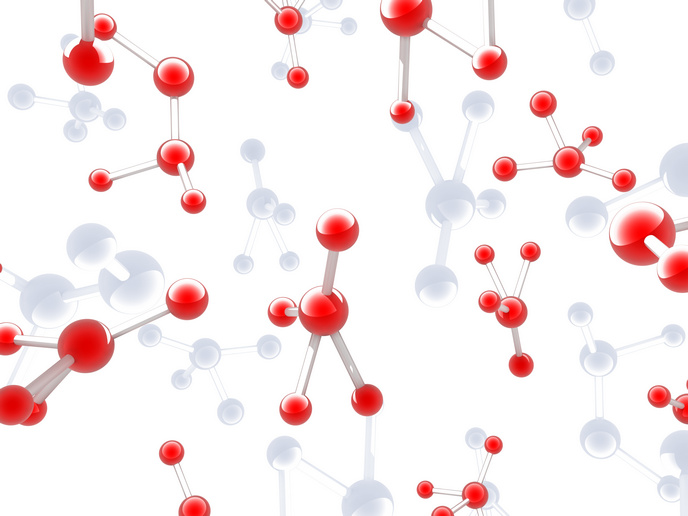Atomic clocks prepare for the field and for space
At the heart of any clock is an oscillatory phenomenon that occurs at a highly regular rate, whether this is a swinging pendulum or electrically driven oscillations of a quartz crystal. Mechanical and electromechanical timepieces, however, are susceptible to temperature changes and ageing, despite their ingenious designs. Moreover, the steady need for more and more precise timing has demanded oscillators with higher frequencies. Optical atomic clocks make use of the frequency of electron transitions from one atomic orbital to another. Such frequencies are optical, ultrahigh compared to the conventional microwave frequencies. This approach represents a revolutionary step forward in time standards, enabled by advances in the field of laser technology and quantum optics. Optical atomic clocks will supersede the established cesium-based atomic clocks, which 'tick' at a microwave frequency. In lattice optical atomic clocks, cold atoms are drawn into a laser wave in the form of a standing wave, a so-called optical lattice. Herein, thousands of atoms are simultaneously confined. By tuning the lattice laser light to a particular, “magic” wavelength, its effect on the electron transitions can be minimised. Thus, optical atomic clocks are capable of unprecedented accuracy and stability. With EU funding of the SOC2 (Towards neutral-atom space optical clocks: Development of high-performance transportable and breadboard optical clocks and advanced subsystems) project, a team of researchers developed critical components and subsystems required for ultra-precise neutral-atom lattice optical clocks suitable for transport and eventually for use in space. The researchers worked with ytterbium (Yb) and strontium (Sr) atoms. The SOC2 scientists developed the needed laser subsystems and integrated them with atomics subsystems for Sr and Yb into complete clock systems. One result is the first fully modular lattice optical atomic clock. For this Sr-based apparatus they devised compact and robust laser-frequency-stabilisation subsystems based on optical cavities, a permanent-magnet atom slower, and a very compact atom chamber. Furthermore, a compact, low-power-consumption oven delivers the atoms to the chamber. The apparatus routinely produces ultracold Sr atoms at micro-Kelvin temperature in an optical lattice. The clock’s properties, such as the systematic shifts of the transition frequency and the instability, have been characterized for the bosonic isotope 88Sr, achieving very good results, including a frequency instability at the 1x10-16 fractional level. For the Yb-based clock, scientists developed external cavity diode lasers using narrowband interference filters that promise improved stability, compared to commonly used grating-stabilised lasers. The apparatus became fully operational. It worked automatically and stably for several continuous hours of use. A preliminary metrological characterization took place at the Universität Düsseldorf. It was subsequently transported by van from the Universität Düsseldorf to the Italian metrology institute (INRiM) in Torino, put into operation again, and then transported back. The SOC2 optical atomic clocks represent breadboard-type demonstrators for future clocks to be used in space-based experiments, in particular for a more precise test of one fundamental aspect of Einstein's theory of general relativity, the time dilation in the gravitational field. A space clock would also be useful for delivering ultra-stable frequencies across Earth and for enabling relativistic geodesy, a new approach towards measuring the gravitational potential of the Earth. An ESA mission with these goals is in preparation and the SOC2 scientists are key participants in it.
Keywords
Atomic clocks, optical clocks, semiconductor lasers, cold atoms, quantum technology, SOC2, space, fundamental physics, geodesy







